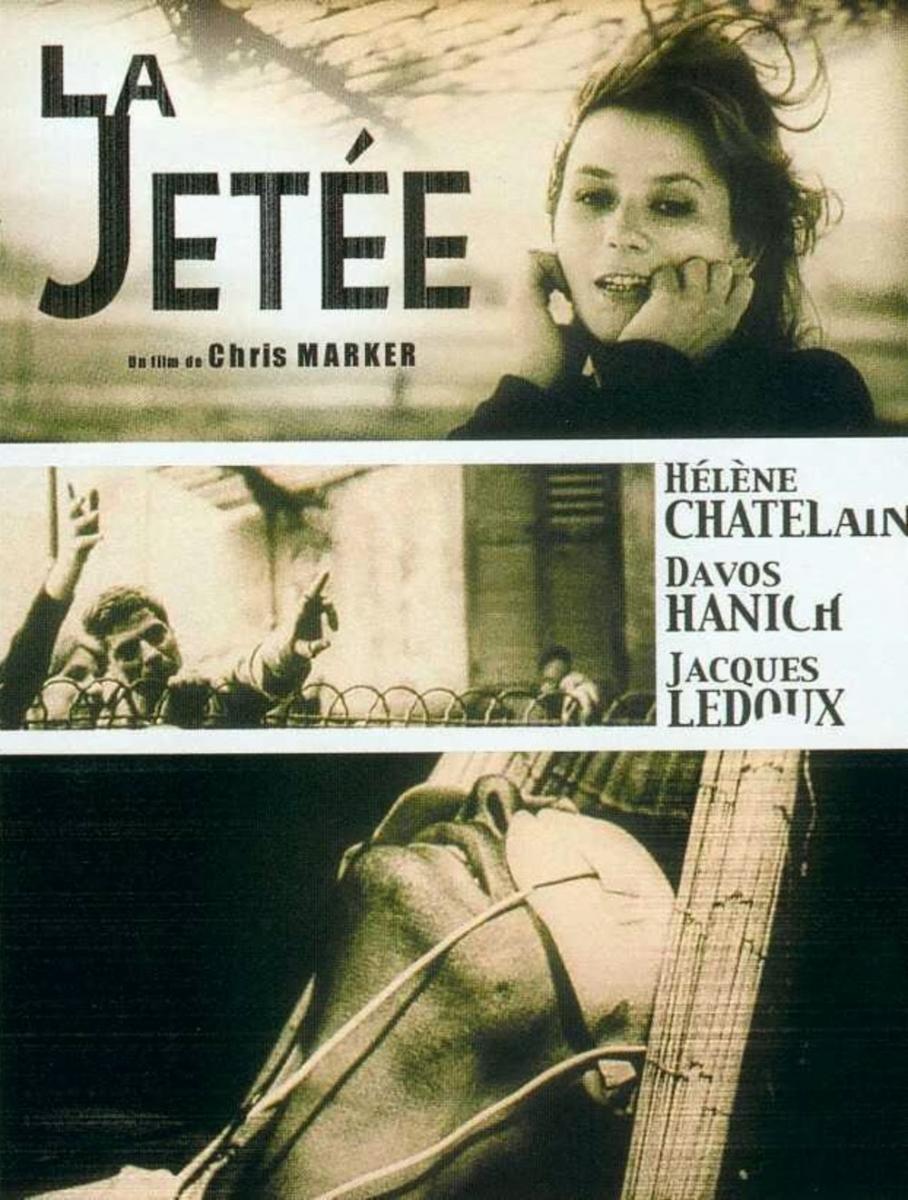La Jetée

Chris Marker
France – 1962

Screenplay: Chris Marker
Cinematography: Jean Chiabaut Chris Marker
Production: Argos Films
Language: French, German
Duration: 28 min
Color: Black and White
Synopsis: In post-apocalyptic Paris survivors live underground and scientists research time travel, hoping to send test subjects to different time periods to beseech both Past and Future to help save the Present. Only one test subject can withstand the psychological strain of time travel, the key to which is a vague but obsessive memory from his pre-war childhood, of a woman he had seen on the jetty at Orly Airport shortly before witnessing a man—his future self—die on the observation platform. During his numerous time-jumps to the past he develops a romantic relationship with the woman. The experimenters next send him into the far future were he acquires the technology to regenerate his own destroyed society, but upon his return he senses that he is to be executed by his jailers. The people of the future offer to help him escape to their time permanently, but he asks instead to be returned to the pre-war time of his childhood, hoping to find the woman. On the jetty at the airport the child version of himself witnesses how an agent of the present kills his future self as he rushes to the woman for the last time.
Notes:
In his 1987 Science Fiction Studies article, “Chris Marker and the Cinema as Time Machine,” the film theorist Paul Coates captures an essential paradox of the 1963 film La Jetée: “The more time goes on, the more La Jetée grows in stature, acquiring a resonance its mere twenty-eight minutes would hardly lead one to expect.” It has now been over fifty years since Chris Marker – Christian Francois Bouche-Villeneuve – made his only “fictional film” a short, avant-garde science-fiction piece told almost entirely in still pictures. It includes only a single, tiny moment of action: a woman blinks her eyes.
Yet despite being in grainy black-and-white and of brief duration, the film, sometimes referred to as a “photo roman,” has made an enormous impact. It has spawned articles, books, special issues of journals, and several derivative time-travel movies, including the recent film Looper [and more recently, The Edge of Tomorrow (2014)]. We cannot think of La Jetée without being touched, moved, and even deeply upset. It is a film that leaves its mark, that cannot easily be forgotten. But it does not stop there; something comes over us that goes above and beyond any representation, something perhaps on the order of the subliminal. Set against today’s Hollywood films, for all their modesty and lack of gloss, the stills in La Jetée possess an affective impact that is far more defined and challenging than that produced by the restless action and the technological show of the blockbuster. It’s a film that somehow ramifies as it reproduces itself. Many works – film, music, fiction – have emerged in response to the film or are heavily indebted to it. James Cameron’s 1984 The Terminator clearly recalls Marker’s film, particularly in its time travel/assassination narrative structure. Terry Gilliam’s 1995 film, 12 Monkeys, cites La Jetée in its credits: it is a direct remake.
Why the persistent interest? Perhaps the film’s short runtime and use of stills work in its favor, forcing viewers toward a focused, active participation that film rarely requires. It’s a film that, to use Roland Barthes’s term, is scriptible, or “writerly,” one that requires the viewer imaginatively to “film” in a lot, to fill in gaps and lacunae, to graft something from a preexistent personal or cultural narrative onto an almost skeletal structure. By filling in the action of and between the stills, animating the film through their own memories, viewers inevitably infer an allegorical version of any of several familiar grand narratives. The film’s bareness stirs the viewer out of a typically passive film viewing mode and toward an especially active construction of plot, story, significance, meaning. Readers or viewers need to fill in, to concretize and complete, a made up world. Marker’s film differs from most, though, in that it’s more gap than text. But for the blink, there are only still shots, which do not move, despite the dissolves and fades that sometimes give the illusion of movement. (An earlier version of the film included a scene of the lead character running on the pier, but that was later cut out. Brian Dillon notes, in his TLS review of the recent Whitechapel “Grin Without a Cat” exhibition, that the live action sequence radically changes the film’s effect: “the film’s center of gravity has shifted. ”) Thus this featurette provides viewers a somewhat novel film-watching experience, as well as a new vantage point on what it means to watch a film. A more or less complete narrative arc seems to offer an apparent closure sealed by the main character’s death, though that safety only lasts so long as one doesn’t think too closely about any implicit Nachgeschichte, or after-story. In fact, let’s forget Nachgeschichte here altogether: this is time travel, so what happens next, after the putative endpoint of the film, has a certain surrealistic unpredictability.
Excerpts adapted from Cioffi, Frank L. “La Jetée at Fifty-Two.” Raritan 34, no. 3 (Winter2015 2015): 37-56.


